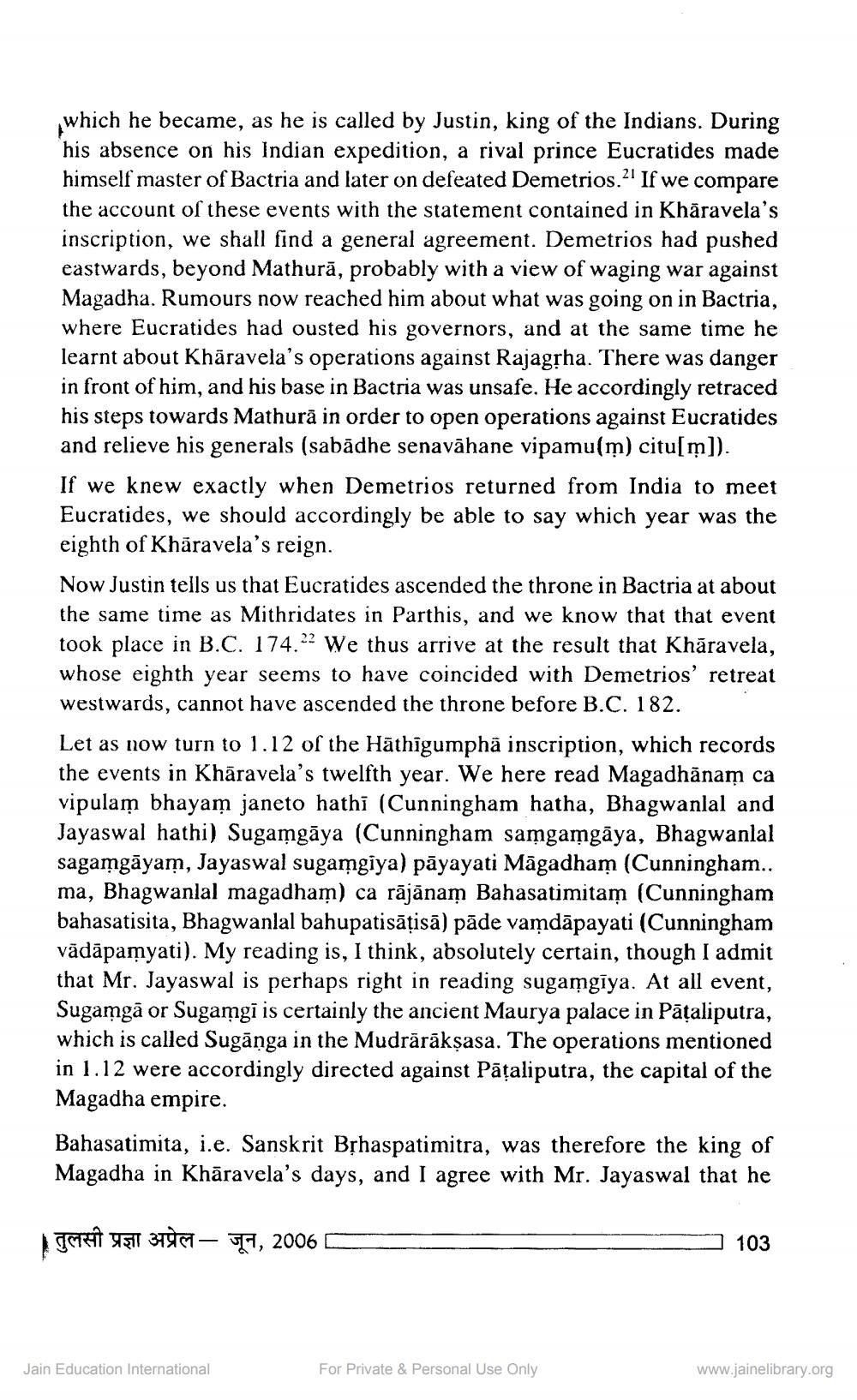________________
which he became, as he is called by Justin, king of the Indians. During his absence on his Indian expedition, a rival prince Eucratides made himself master of Bactria and later on defeated Demetrios.21 If we compare the account of these events with the statement contained in Khāravela's inscription, we shall find a general agreement. Demetrios had pushed eastwards, beyond Mathurā, probably with a view of waging war against Magadha. Rumours now reached him about what was going on in Bactria, where Eucratides had ousted his governors, and at the same time he learnt about Khāravela's operations against Rajagrha. There was danger in front of him, and his base in Bactria was unsafe. He accordingly retraced his steps towards Mathurā in order to open operations against Eucratides and relieve his generals (sabādhe senavāhane vipamu(m) citu[m]). If we knew exactly when Demetrios returned from India to meet Eucratides, we should accordingly be able to say which year was the eighth of Khāravela's reign. Now Justin tells us that Eucratides ascended the throne in Bactria at about the same time as Mithridates in Parthis, and we know that that event took place in B.C. 174.22 We thus arrive at the result that Khāravela, whose eighth year seems to have coincided with Demetrios' retreat westwards, cannot have ascended the throne before B.C. 182. Let as now turn to 1.12 of the Hāthigumphā inscription, which records the events in Khāravela's twelfth year. We here read Magadhānam ca vipulam bhayam janeto hathi (Cunningham hatha, Bhagwanlal and Jayaswal hathi) Sugamgāya (Cunningham samgamgāya, Bhagwanlal sagamgāyam, Jayaswal sugamgiya) pāyayati Māgadham (Cunningham.. ma, Bhagwanlal magadham) ca rājānam Bahasatimitam (Cunningham bahasatisita, Bhagwanlal bahupatisāțisā) pāde vamdāpayati (Cunningham vādāpamyati). My reading is, I think, absolutely certain, though I admit that Mr. Jayaswal is perhaps right in reading sugamgiya. At all event, Sugamgā or Sugamgi is certainly the ancient Maurya palace in Pătaliputra, which is called Sugānga in the Mudrārākṣasa. The operations mentioned in 1.12 were accordingly directed against Pāšaliputra, the capital of the Magadha empire. Bahasatimita, i.e. Sanskrit Bịhaspatimitra, was therefore the king of Magadha in Khāravela's days, and I agree with Mr. Jayaswal that he
TAB 451 3745 – 17, 2006 C
103
Jain Education International
For Private & Personal Use Only
www.jainelibrary.org




